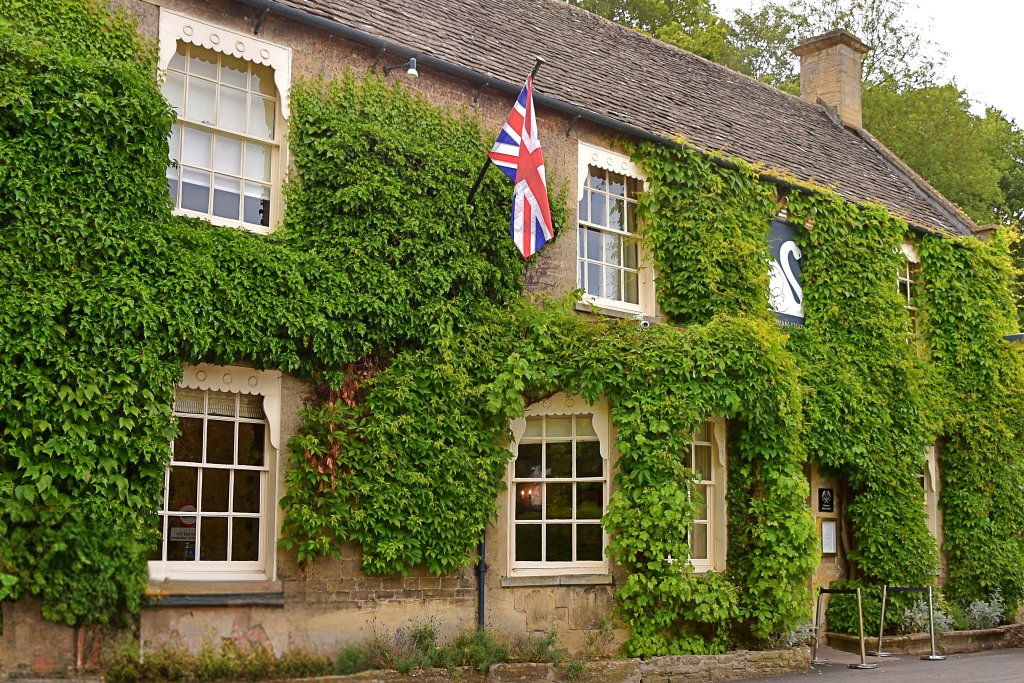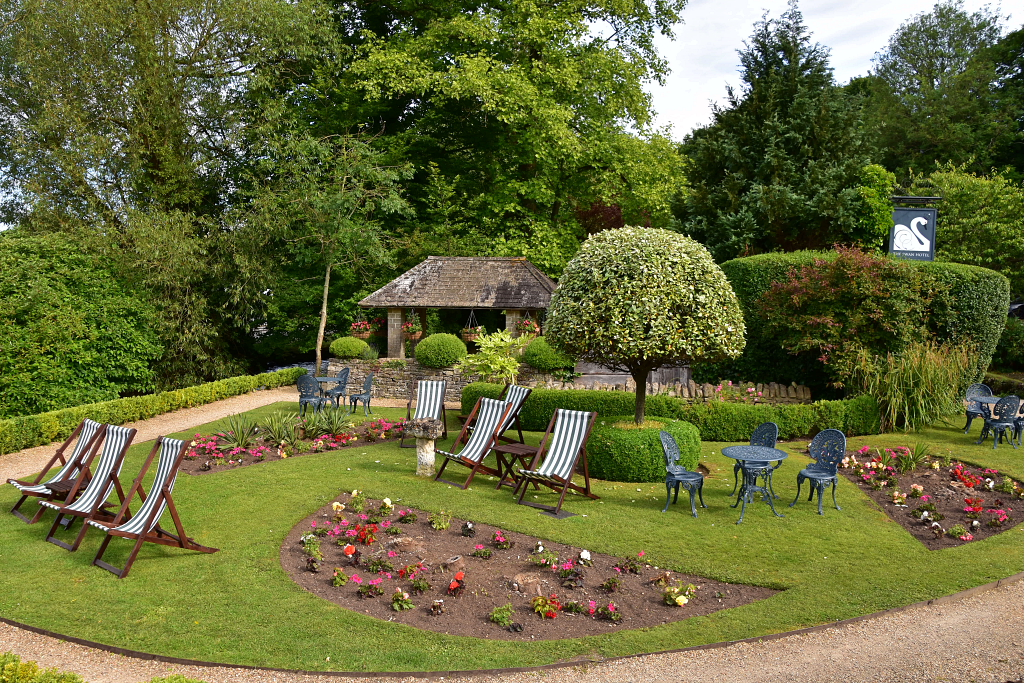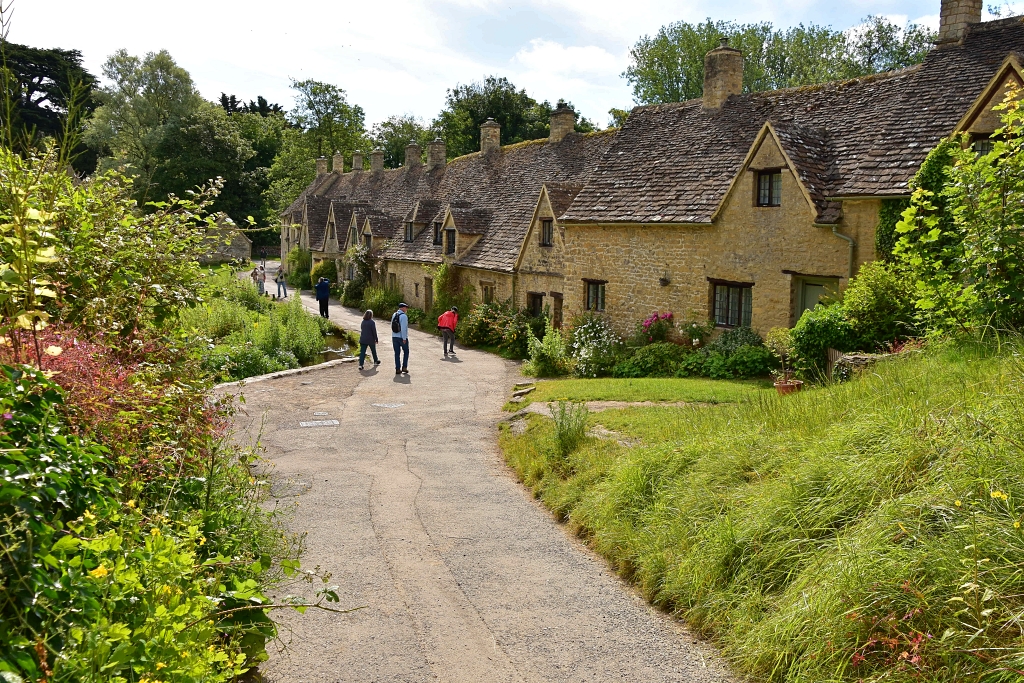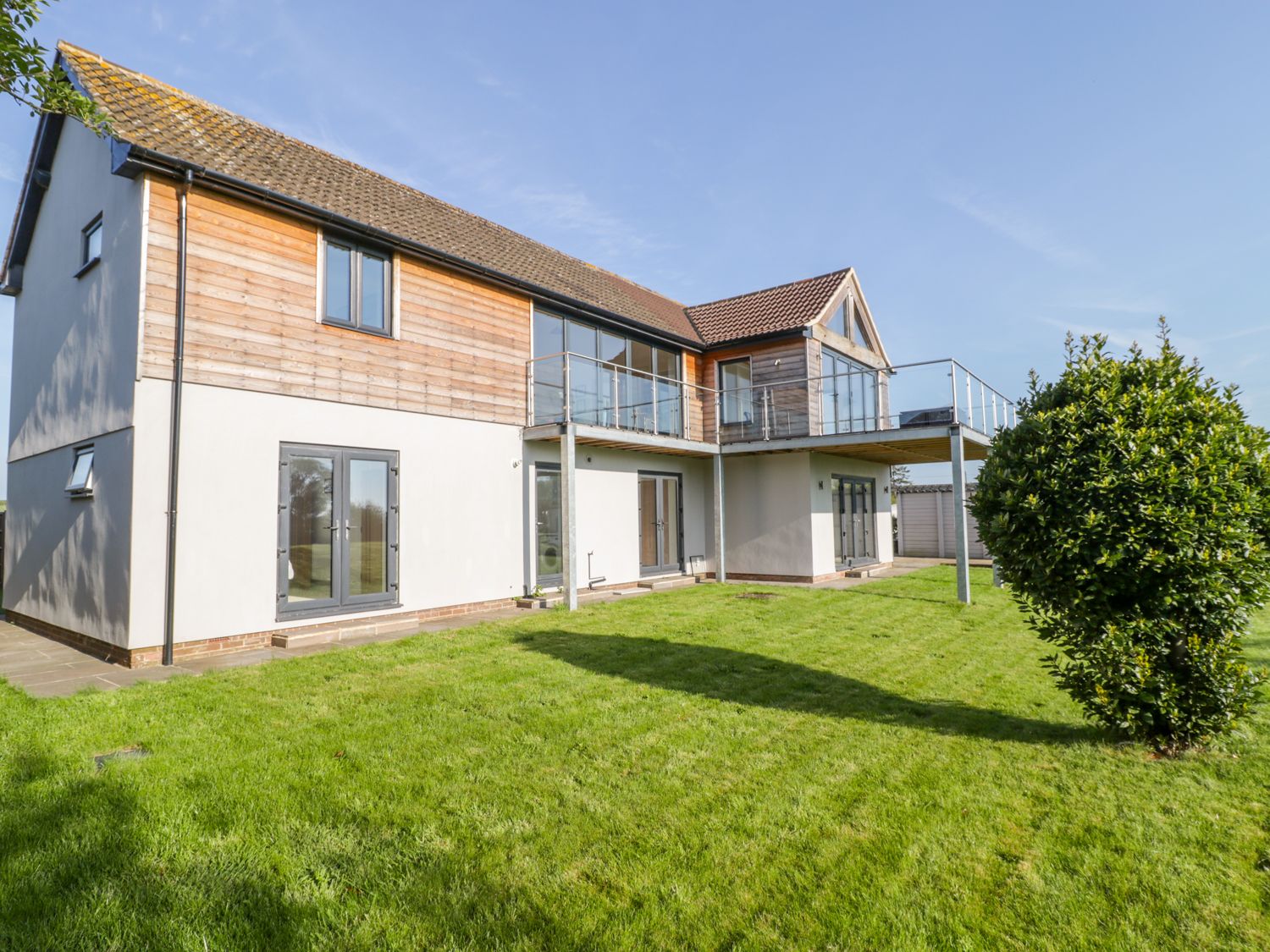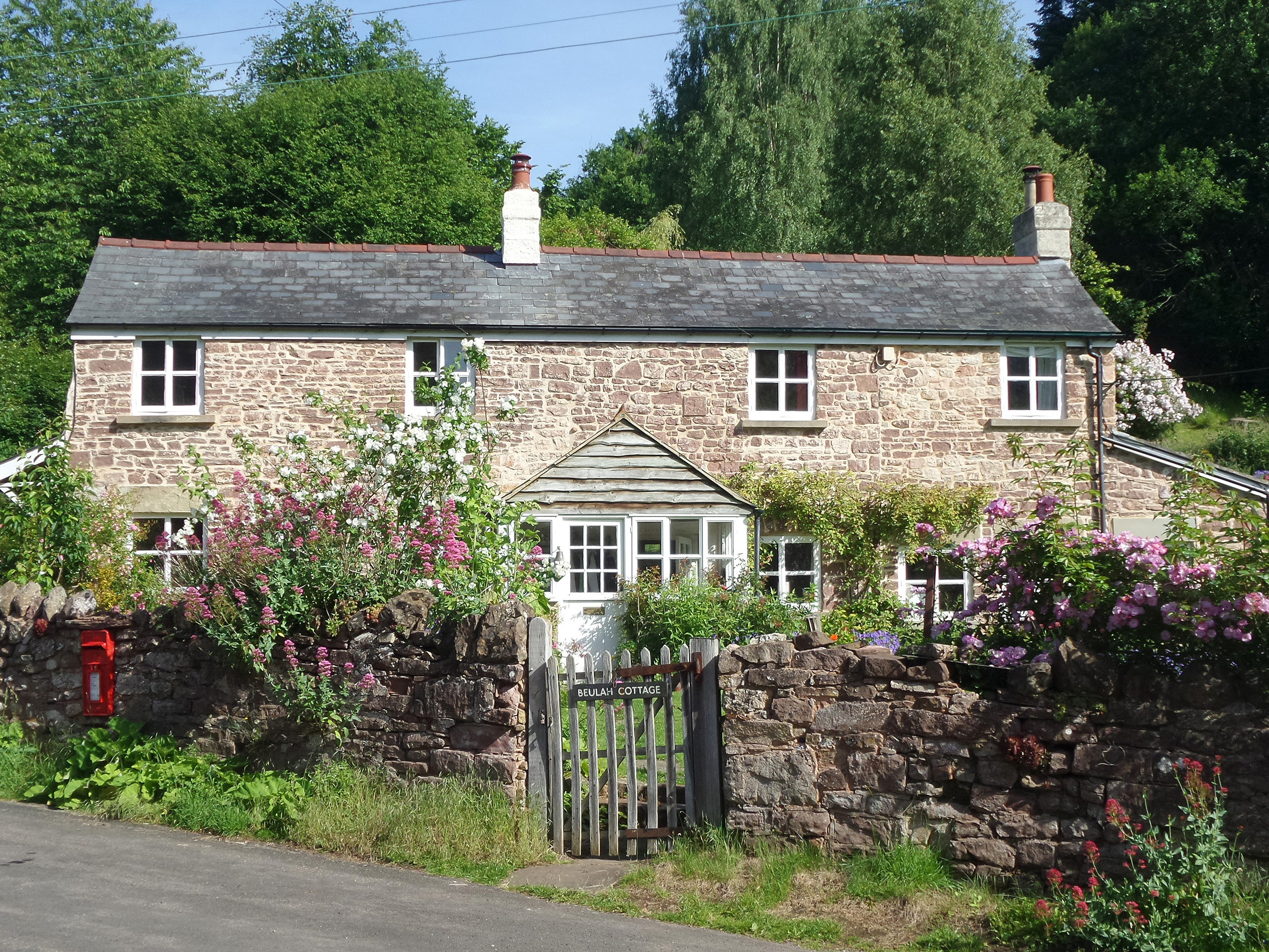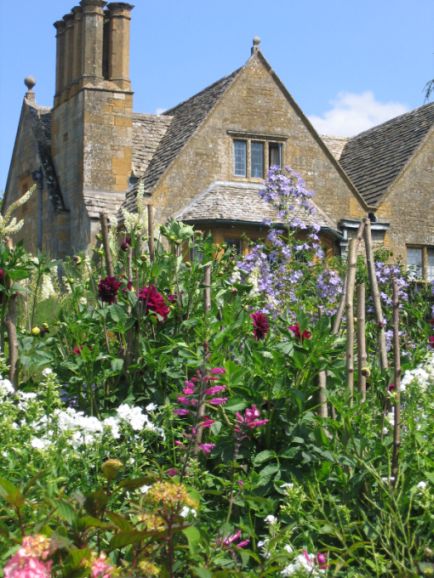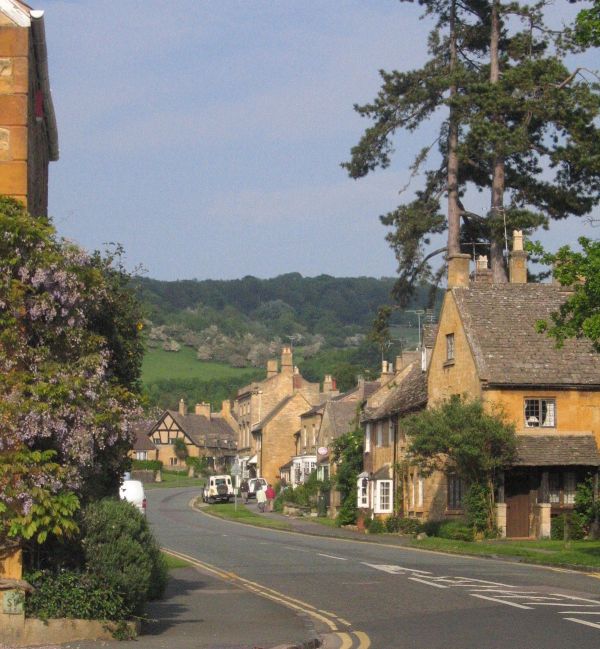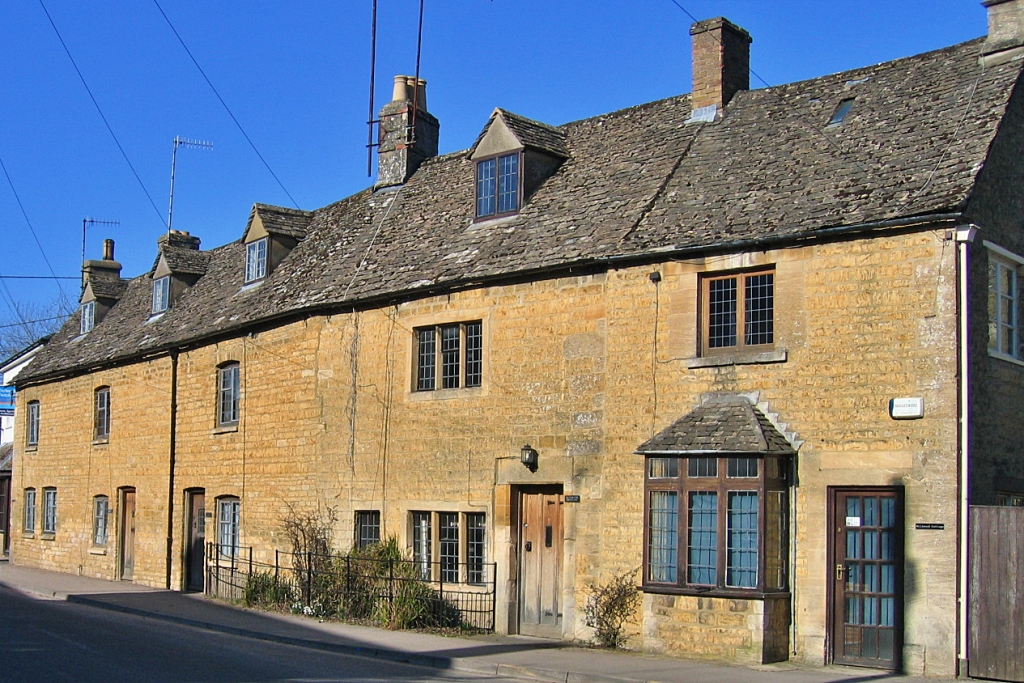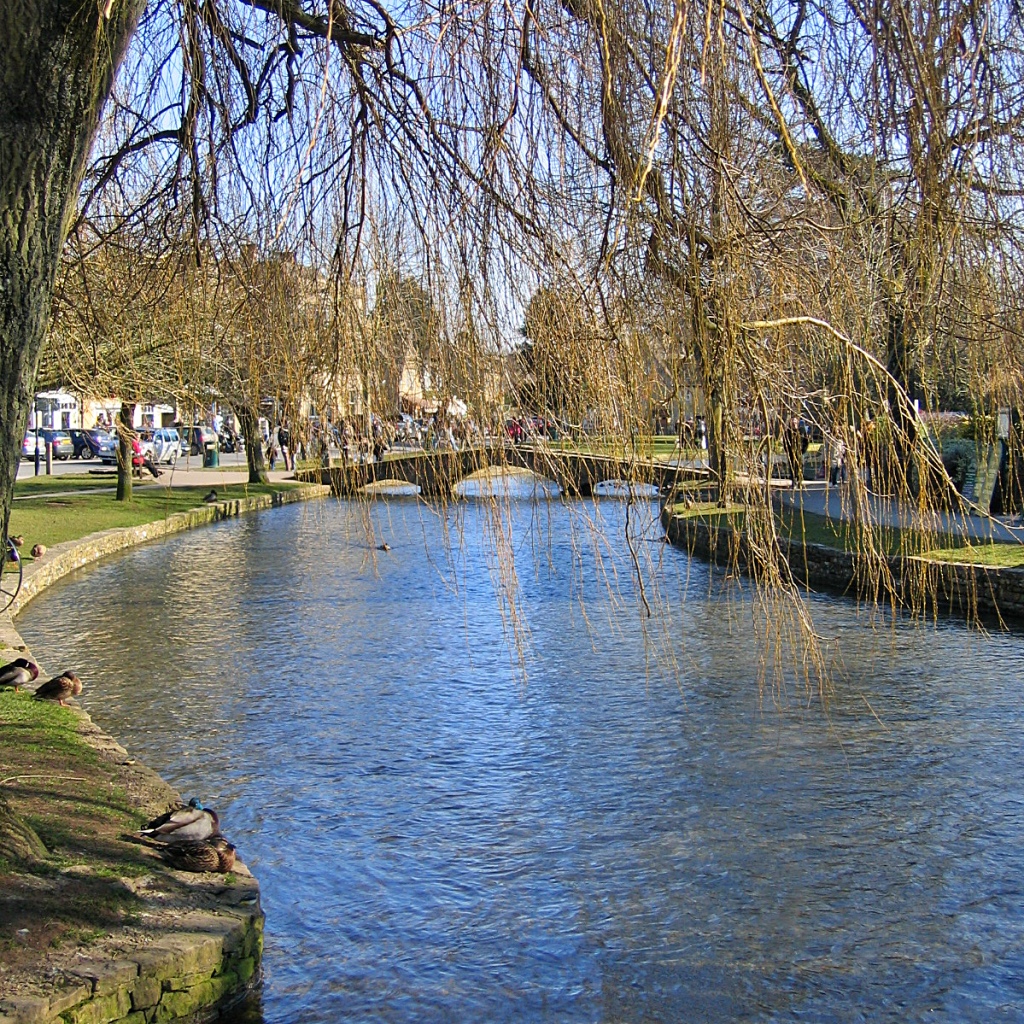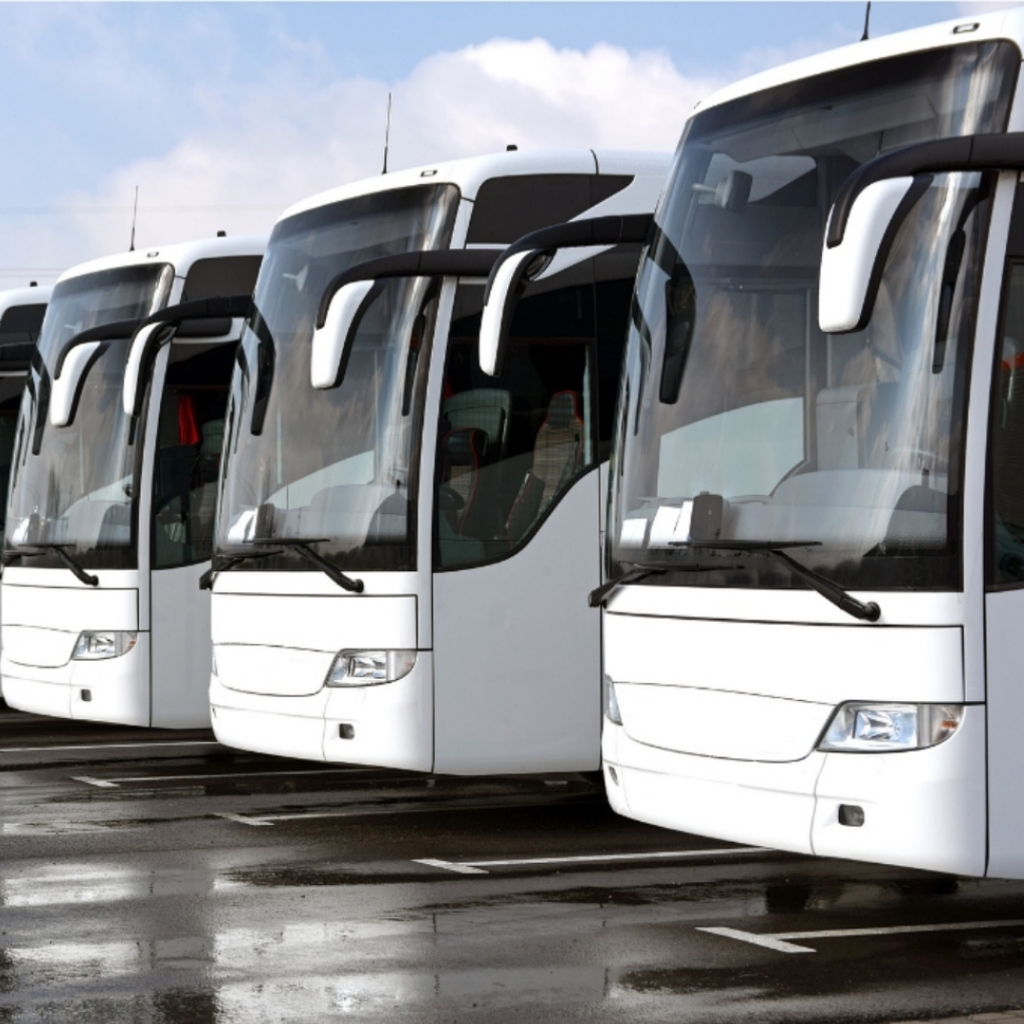Bibury in the Cotswolds
The village of Bibury in the Cotswolds is a famously attractive “Cotswoldsy” village full of honey-coloured buildings with the pretty River Coln flowing through. William Morris, fabric designer, artist, poet, and writer, described it as “the most beautiful village in England”. There's more than one village described as the 'most beautiful village in England' - Castle Combe and Lacock in Wiltshire to name but two - and we've started wondering how many 'most beautiful villages' there are in the country. ;-)
Bibury is a village we know better than others. We used to live nearby and Bibury was a regular stop if we cycled or drove through, just as visiting friends or family would be taken over for a stroll. But that was many years ago and since then, Bibury has become a Cotswold hot-spot and can get very busy at peak times, and especially on sunny days.
On our most recent Tour of the Cotswolds day out in June 2024, we left our Northamptonshire home extremely early to get to Bibury before the crowds. Having stopped in Burford and Lechlade-on-Thames, we arrived in Bibury just before 8 o’clock in the morning to find the first coach already unloading its passengers. However, it was just 22 coach passengers, so the coach driver told us as we chatted whilst taking photos with him. We soon spread out and it felt very much like we were the only ones there.
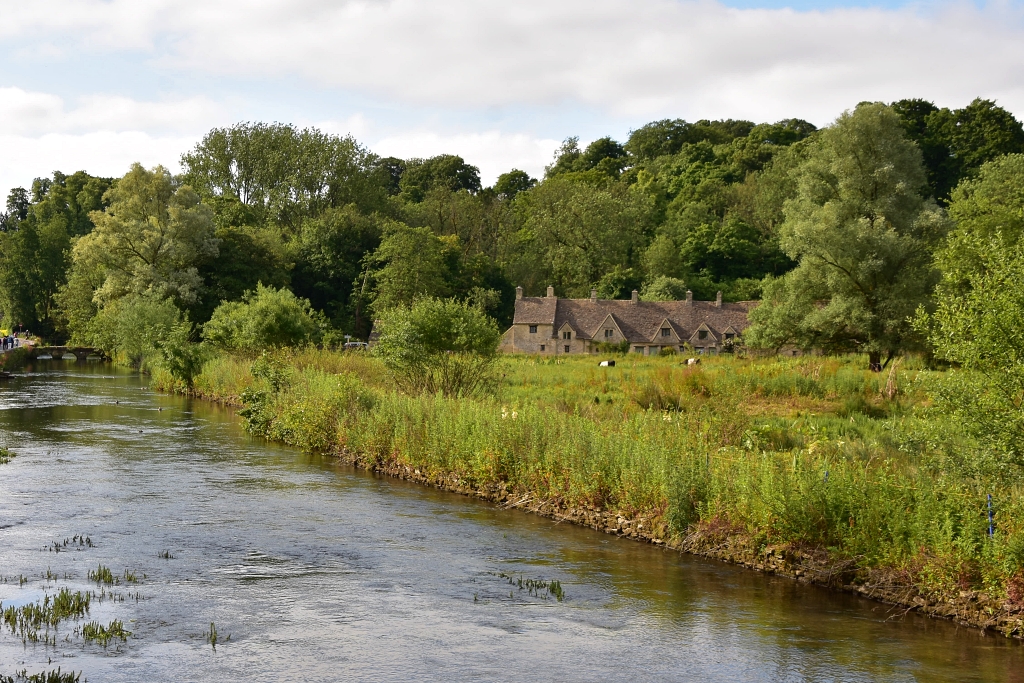 Picturesque Bibury in the Cotswolds © essentially-england.com
Picturesque Bibury in the Cotswolds © essentially-england.comAbove, you have one of the reasons why Bibury is such a popular Cotswolds village. This quintessentially English countryside view of the River Coln and meadow with two Belted Galloway cows grazing in front of the historic cottages of Arlington Row is a real highlight of this beautiful destination.
It's a view of how we think England might have been before cars, coaches, and Instagram. Is it true? It's doubtful, because between the river and surrounding fields, Bibury was a working village filled with farmers, shepherds, and weavers, all going about their daily tasks. On summer Sunday afternoons, though, or in the evening twilight, Bibury might have appeared just like this - peaceful and tranquil - for a little while.
Modern-day Bibury is a busy place, but... if you visit during the summer months, you don't just get to admire cows and beautiful cottages. You can take pleasure in all the lovely colourful gardens, too!
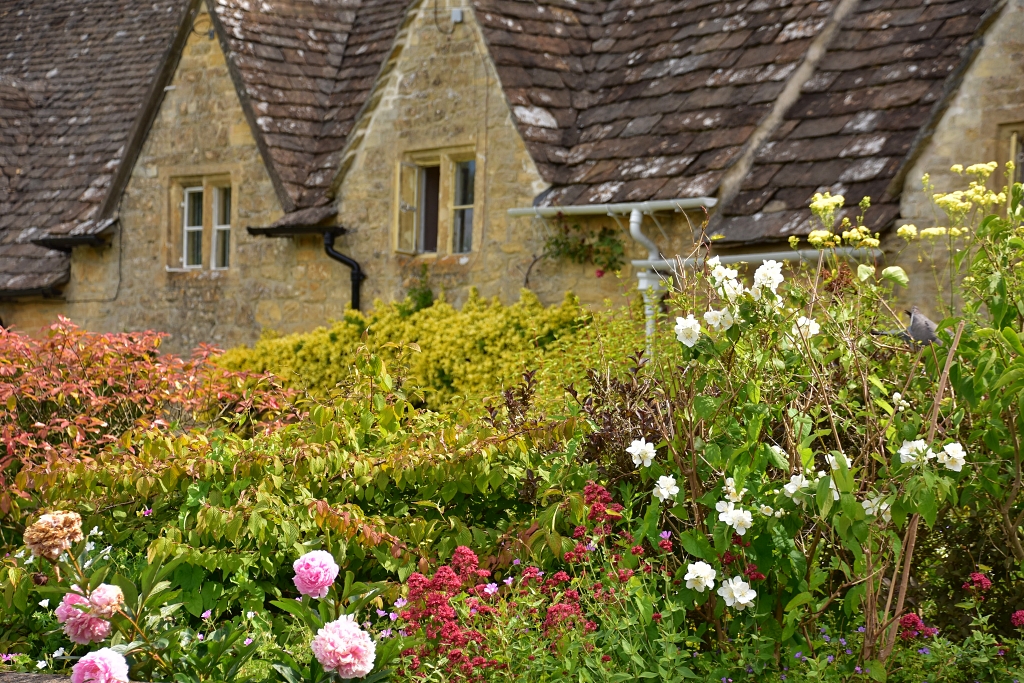 A Colourful Garden in Bibury © essentially-england.com
A Colourful Garden in Bibury © essentially-england.com
Exploring Bibury in the Cotswolds
For future Bibury explorers we must mention parking. Bibury gets busy and parking spaces are few. You can find some on street parking beside the River Coln and a small carpark (about 10 spaces) near the bridge, which also has reserved parking for coaches. Also, tucked away up the road to Ablington (take the small road by the Swan Hotel), is a small pay and display carpark attached to Bibury Trout Farm.
Most visitors to Bibury probably complete the short stroll along the riverside to the footbridge, cross the River Coln to go up past Arlington Row, and return along the back of the meadow, a circuit of about 0.4 miles. In theory, it should take about 15 minutes but will take much longer as everyone will be stopping to take or pose for photos. Also, your visit may take longer as there are several very nice-looking establishments for refreshments to tempt you on the way.
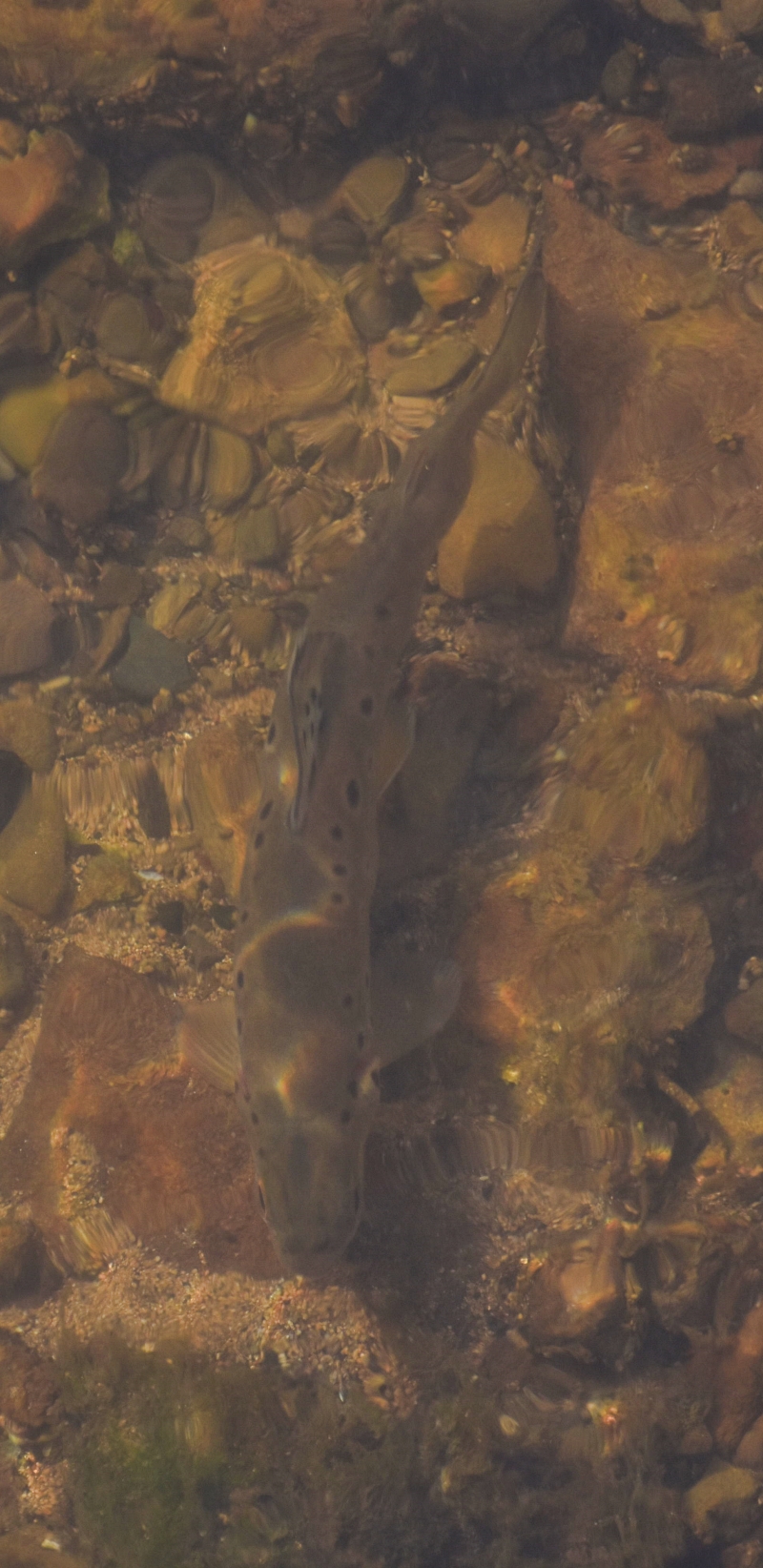 Brown Trout in the River Coln
Brown Trout in the River Coln © essentially-england.com
Bibury was listed in the Domesday Book as Becheberie with much of the land owned by St. Mary’s Priory in Worcester. The listing also noted that there was a mill, of which a later building, Arlington Mill, still stands next to its mill stream opposite the small carpark. The mill has been used to grind field crops and as part of the woollen cloth cleaning process known as fulling.
Next to the mill is the entrance to Bibury Trout Farm where Brown and Rainbow trout are bred for food and the restocking of rivers, lakes, and reservoirs. It is the oldest working trout farm in England.
I’m not sure if the River Coln is stocked with trout or whether they’ve somehow escaped, but if you look carefully in the river as you cross one of the bridges you can see them sitting there facing the current.
Arlington Row is possibly the most photographed row of cottages in England. They date from around 1380, when they were built as a monastic wool barn. In the seventeenth century, the barn was converted into small cottages for wool weavers. The weavers would have washed, cleaned, and woven the wool before it went to the mill. The area of meadowland between Arlington Row and the river is known as the Rack Isle as this was where the weavers hung their freshly cleaned wool to dry on racks.
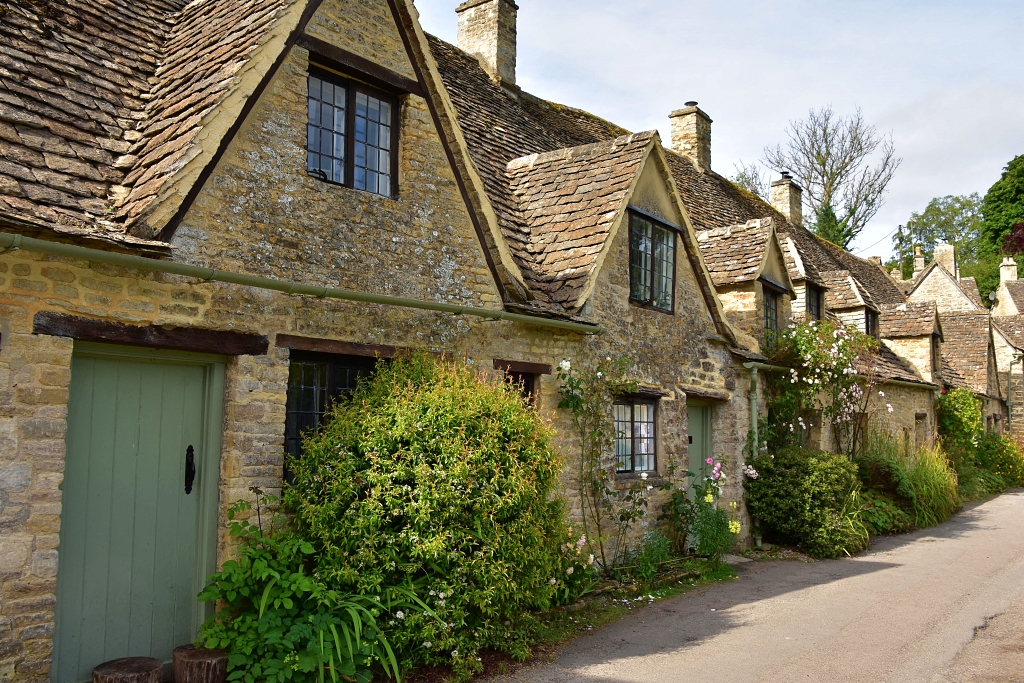 Arlington Row in Bibury © essentially-england.com
Arlington Row in Bibury © essentially-england.comAlthough most visitors stick to the short circuit in the map above, we strongly recommend exploring other parts of Bibury. Some of the buildings look wonderful with their golden stone walls, and in the summer, the colourful gardens add to the pleasure.
St. Mary’s
Church is a case in point. This lovely Grade I listed Anglo-Saxon church has a
beautiful graveyard with lots of rose bushes and some well-kept carved table
tombs and headstones. Inside you can find some stunning stained-glass windows, one
of which dates from the thirteenth century, while another was pictured on a Royal Mail Christmas stamp in 1992.
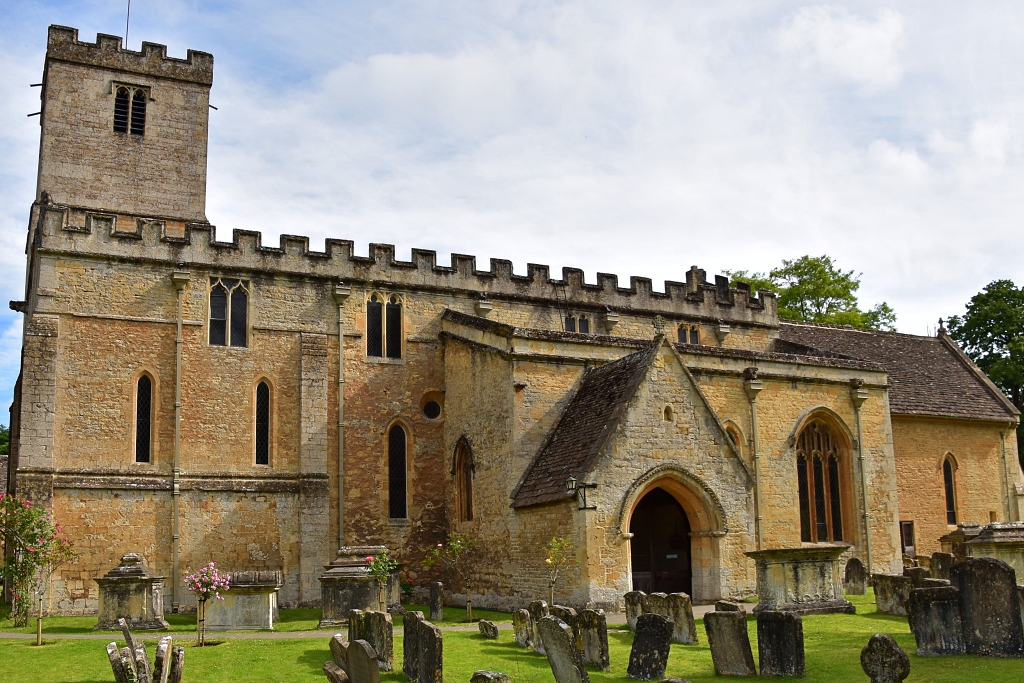 St. Mary's Church in Bibury © essentially-england.com
St. Mary's Church in Bibury © essentially-england.comSome Unusual Bibury Facts
- What many of us call Bibury is actually two villages. On the west side of the River Coln is Arlington and on the east is the true village of Bibury.
- Ford Motor Car Company founder Henry Ford tried to buy the Arlington Row cottages, planning to disassemble them and ship them to America.
- Japanese
Emperor Hirohito stayed in Bibury as part of his European tour, which may
explain why Bibury is such a favourite with Japanese visitors
- A picture of Arlington Row was displayed in the UK passport issued between 2010 and 2015.
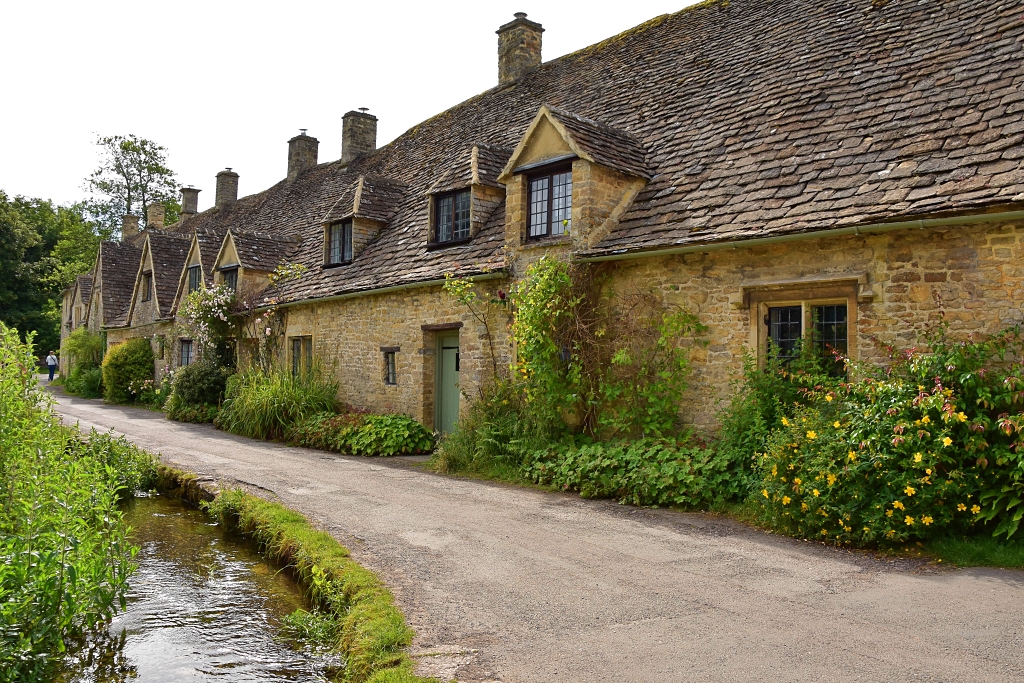 Arlington Row in Bibury © essentially-england.com
Arlington Row in Bibury © essentially-england.comStaying in Bibury
One way to get Bibury to yourself is to be there outside of the main visiting times and that is much easier if you’re staying there. And what better location than The Swan Hotel, an ivy-clad former coaching inn right in the heart of Bibury with beautiful riverside gardens for guests to relax in.
For the ultimate Bibury stay, though, you should book number 9 Arlington Row! The cottage is at the far end of the row and run by the National Trust. It’s very popular, so make sure you book well in advance of your planned visit.
We spent
just over 90 minutes walking around and taking photos. Just as we were
driving away, a second coach was parking up. There were very few carparking
spaces left and the number of visitors was increasing. We were off to the next stop of our Day out in The Cotswolds, which was
Cirencester, the capital of the Cotswolds, just a few miles away.
If you’re staying in London and fancy a day out in the pretty Cotswolds, then there are coach tours available. I found one tour that visits Bibury, Burford, and the very popular Bourton-on-the-Water. Click on the banner above for more details.
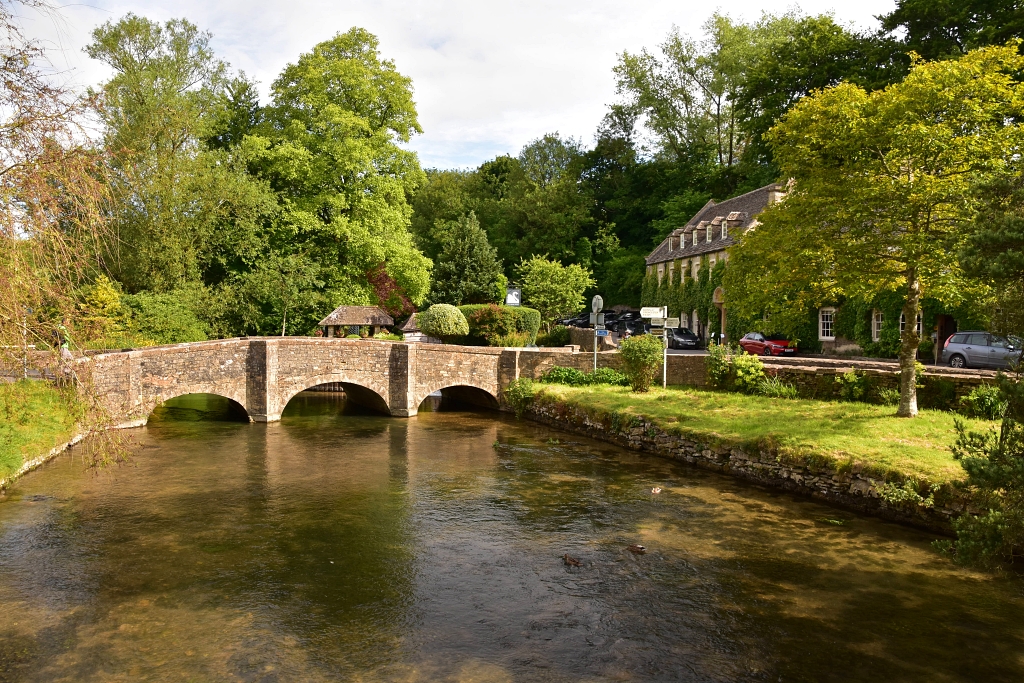 The River Coln Flowing through Bibury in the Cotswolds © essentially-england.com
The River Coln Flowing through Bibury in the Cotswolds © essentially-england.comVisiting Gloucestershire?
Where You Could Stay
Gloucestershire is a great destination whether you want get-away-from-it-all peace, quiet walks and tiny villages, or high fashion shopping and a bit of excitement. Throw in Evensong at Gloucester Cathedral, a ruined abbey or two, racing at Cheltenham and some fantastic local food and you're all set for a weekend or a holiday that has something for everyone whether you're a couple in need of romance or a family in need of fun.
Gloucestershire has its fair share of beautiful apartments and holiday cottages, and here are a couple of ideas where you could stay:
To see other holiday cottages in Gloucestershire click here. Or check out holiday cottages in other parts of England by clicking here.
If you need to find a hotel, then try one of these search platforms...
What You Could See and Do
Explore the regency splendours of Cheltenham, take a walk along the Gloucester and Sharpness Canal or enjoy a long lazy lunch in the very pretty village of Frampton on Severn.
Ride on a steam train or watch some horse racing at Cheltenham's famous race course.
Visit The Slimbridge Wetland Centre. Explore its connection with Scott of the Antarctic and marvel at the variety of birds it attracts.
Spend a day meandering through the Cotswolds lanes. Stop off for ice cream at Lower Slaughter, feed the trout at Bibury, visit the Saxon Church at Duntisbourne Rouse or enjoy the wonderful garden at Hidcote Manor.
Return from our Bibury in the Cotswolds page to the Gloucestershire page here.
